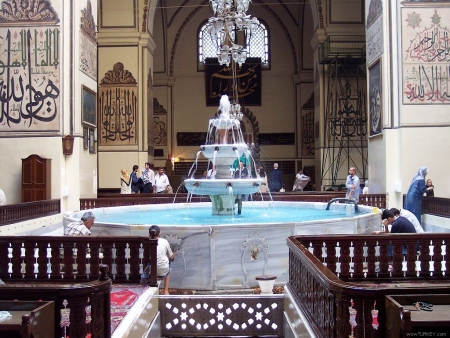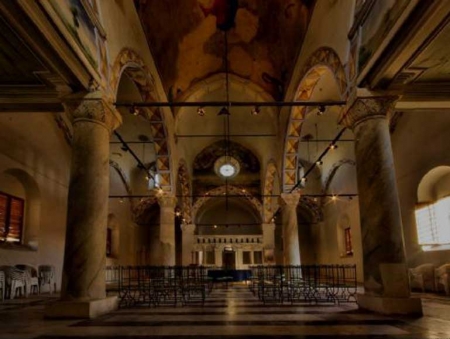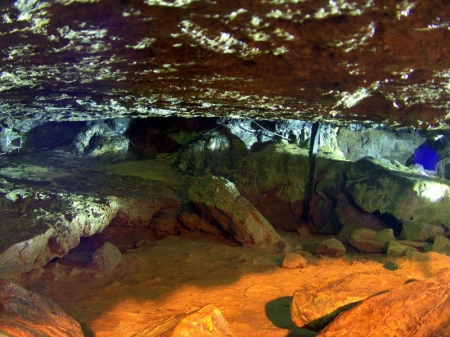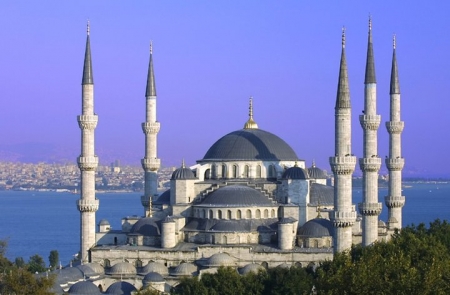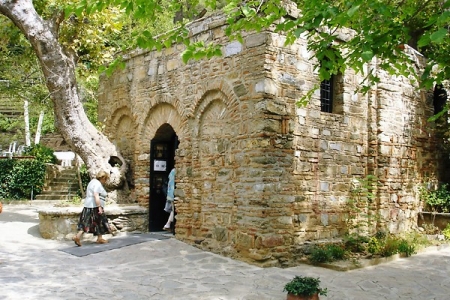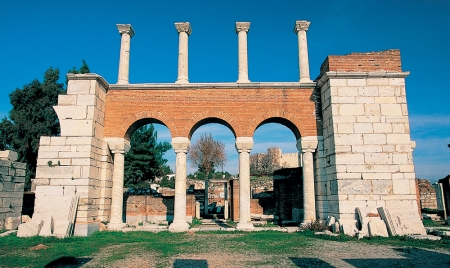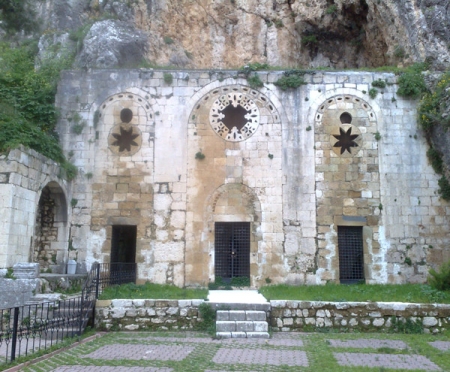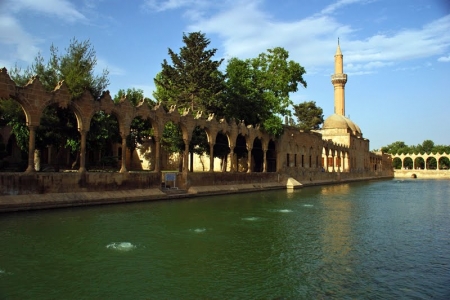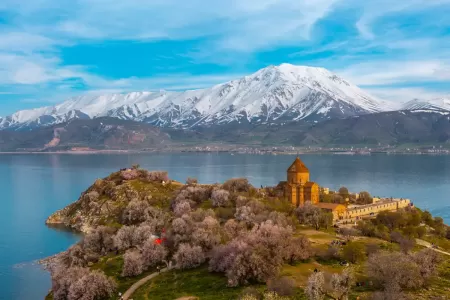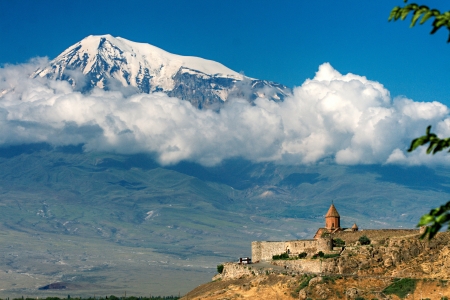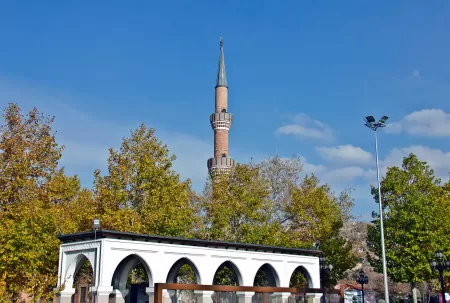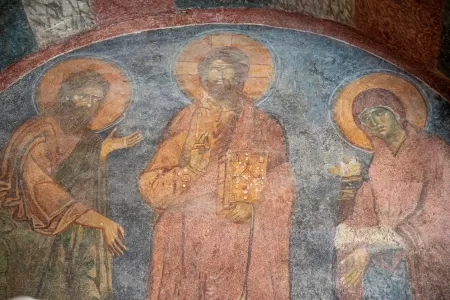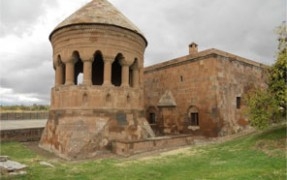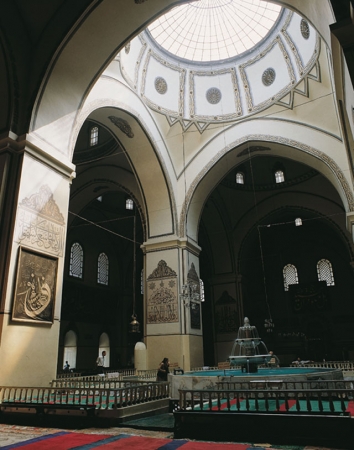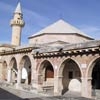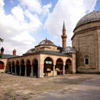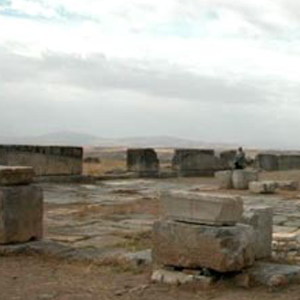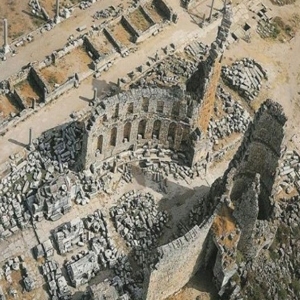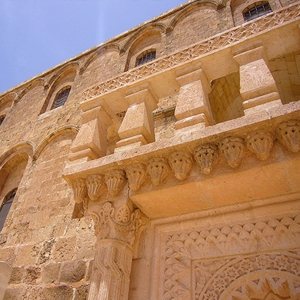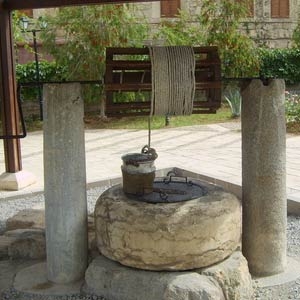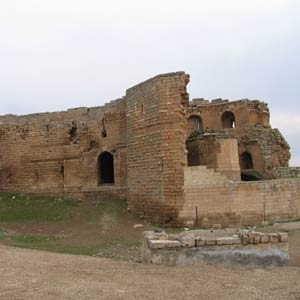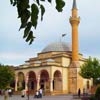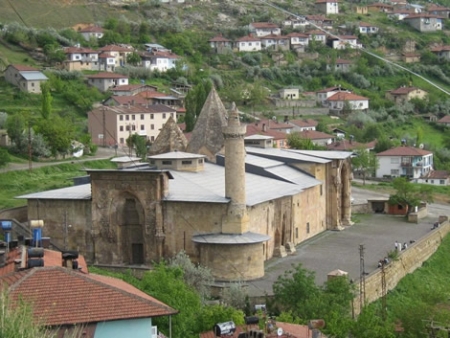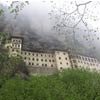Uncovering Ahlat, Turkey: The Hidden Gem of Lake Van

Ahlat Turkey, stands as one of the most fascinating yet overlooked destinations in the country's eastern region. Nestled on the shores of Lake Van—Turkey's largest lake—approximately 44 kilometers north of Tatvan, this small town of just 20,000 residents holds an astonishing historical legacy. During the 13th and 14th centuries, Ahlat flourished as a significant commercial center with a population reaching 300,000 at its peak, fifteen times its current size.
You'll discover that this hidden gem is notably home to the third-largest Muslim cemetery in the world, featuring over 8,000 monumental stones that tell stories of bygone eras. Additionally, the town proudly holds membership in the Cittaslow Network, preserving its local culture and advocating for slow living. The natural wonders surrounding Ahlat are equally impressive, particularly the Nemrut Ahlat Turkey region, which boasts the world's second-largest crater lake sitting at an impressive altitude of 2,500 meters. Whether you're drawn to historical monuments, unique cultural experiences, or breathtaking landscapes, Ahlat offers a remarkable journey into Turkey's rich tapestry of history and natural beauty.
Explore the best Turkey Travel Packages!
Unlocking Ahlat’s Historical Legacy
Beneath the quiet streets of present-day Ahlat lies a tapestry of historical significance that spans centuries. When you explore this ancient town, you're walking through layers of civilizations that have shaped not only Eastern Anatolia but also broader Middle Eastern history.
The rise of Ahlat in the Seljuk era
The true golden age of Ahlat began with the arrival of the Seljuk Turks in the 11th century. During this period, the town transformed from a modest settlement into a thriving metropolis. The Seljuks established Ahlat as a critical administrative center, strategically positioned along vital trade routes connecting Anatolia to Persia and the Caucasus.
What made Ahlat truly exceptional was its remarkable urban development under Seljuk rule. The town became renowned for its distinctive architecture, especially its stone masonry. Seljuk artisans developed what became known as the "Ahlat Stone School" – a distinctive style of craftsmanship still visible in the monumental tombstones throughout the historic cemetery.
Furthermore, Ahlat served as a center of Islamic scholarship during this era. Madrasas (Islamic schools) flourished, attracting scholars from across the Islamic world. These institutions produced important works in fields ranging from theology to mathematics, establishing the town as an intellectual hub alongside more famous centers like Baghdad and Damascus.
Cultural crossroads: Arab, Armenian, and Kurdish influences
Throughout its history, Ahlat functioned as a remarkable cultural intersection where various civilizations converged and coexisted. This unique position resulted in a rich cultural blend that remains evident today.
Armenian influence is particularly notable in the region's architectural heritage. Before the Seljuk period, Armenian craftsmen established distinctive building techniques using the region's volcanic tuff stone. These methods were later adopted and expanded upon by Seljuk builders, creating the unique aesthetic that characterizes Ahlat's historical structures.
Kurdish cultural elements became increasingly prominent throughout the medieval period, especially in the town's rural surroundings. Kurdish traditions in music, storytelling, and craftsmanship wove themselves into the local cultural fabric, creating distinctive practices unique to the Lake Van region.
Arab influence arrived primarily through Islamic scholars and traders who brought not only religious teachings but also scientific knowledge, literary traditions, and artistic styles from the Arab world. This intellectual exchange helped position Ahlat as a significant center of learning.
Ahlat's role in the Ottoman-Safavid conflicts
By the 16th century, Ahlat became a critical flashpoint in the intense power struggle between two mighty empires: the Ottoman Turks and the Safavid Persians. The town's strategic location near the Persian frontier made it exceptionally valuable to both powers.
In 1534, Ottoman Sultan Suleiman the Magnificent captured Ahlat during his eastern campaign against the Safavids. This conquest proved pivotal, as it secured Ottoman control over Eastern Anatolia and provided a strategic foothold for operations against Safavid territories.
Despite Ottoman political control, Persian cultural influence remained strong in Ahlat. This cultural persistence created a fascinating blend of Ottoman administrative systems with Persian artistic and architectural elements that distinguished Ahlat from purely Ottoman towns.
The centuries of conflict took their toll on Ahlat's prosperity. Once a thriving medieval center with impressive urban infrastructure, the town gradually declined in population and importance. Nevertheless, these historical layers remain visible when you visit today, in the architectural styles, cultural practices, and even culinary traditions that make Ahlat Turkey, a living museum of Anatolian history.
Top Attractions You Shouldn’t Miss
When visiting Ahlat Turkey, the town's remarkable blend of natural wonders and historical treasures creates an unforgettable experience. Each attraction tells part of the region's story, offering glimpses into centuries of cultural evolution alongside stunning natural landscapes.
Seljuk Cemetery: A walk through stone-carved history
The Seljuk Cemetery stands as Ahlat's most impressive historical site—a vast open-air museum spanning 210 hectares. As you wander among more than 8,000 ornate tombstones, you'll witness masterpieces of medieval Islamic stonework dating primarily from the 12th to 15th centuries.
What makes these monuments truly exceptional is their size and craftsmanship. Many stones tower 3-4 meters high, adorned with intricate geometric patterns, calligraphy, and symbolic motifs that showcase the renowned "Ahlat Stone School" technique. The cemetery is organized into several sections, with the Meydanlık area containing the most impressive examples.
Morning visits offer the most dramatic views, as sunrise casts long shadows across the tombstones, highlighting their detailed engravings. Recently recognized as a UNESCO World Heritage site, the cemetery now includes informative pathways guiding you through this extraordinary historical landscape.
Ahlat Castle: Views and stories from the hilltop
Perched dramatically on a hill overlooking Lake Van, Ahlat Castle provides both historical insight and panoramic views. Though partially in ruins, the remaining stone walls tell the story of the region's strategic importance through centuries of conflict.
Originally constructed during the medieval period, the castle served as a crucial defensive position during the Ottoman-Safavid struggles. The climb to the castle rewards you with sweeping vistas of Lake Van's blue waters and the surrounding volcanic landscape. Autumn visitors particularly appreciate the golden hues that transform the surrounding hills.
Ahlat Museum: Artifacts and local heritage
Housed in a restored traditional building near the town center, the Ahlat Museum showcases the region's rich archeological heritage. The collection features:
- Artifacts recovered from various historical periods, including Urartian, Persian, Byzantine, and Ottoman items
- Examples of the famous Ahlat stonework, including miniature tombstones and architectural elements
- Ethnographic displays highlighting traditional clothing, household items, and crafts
The museum's intimate setting allows for close examination of detailed stone carvings and pottery that illuminate daily life throughout Ahlat's long history. Interactive displays explain the techniques used by medieval stonemasons to create the cemetery's remarkable monuments.
Lake Van: Nature's calm beside history
As Turkey's largest lake, Lake Van offers a peaceful complement to Ahlat's historical attractions. The alkaline waters create a striking turquoise color that changes with the light throughout the day.
From Ahlat's shoreline, you can enjoy boat trips to nearby islands, including Akdamar Island with its 10th-century Armenian church. Alternatively, relax on the quiet beaches north of town, where the water's high salinity makes swimming uniquely buoyant. Sunset over the lake creates spectacular photography opportunities, with mountain silhouettes reflected in the still waters.
Nemrut Ahlat Turkey: Volcanic beauty and ancient echoes
Just southwest of Ahlat lies Mount Nemrut (not to be confused with the more famous Nemrut in eastern Turkey). This dormant volcano features one of the world's largest crater lakes, sitting at an impressive 2,250 meters above sea level.
The journey to Nemrut Ahlat Turkey takes you through fascinating geological formations created by ancient lava flows. Upon reaching the summit, you'll discover a mesmerizing crater lake with startlingly clear waters. During summer months, the surrounding alpine meadows burst with wildflowers, creating a colorful contrast to the volcanic rocks.
For the most magical experience, consider camping overnight near the crater—the lack of light pollution makes for extraordinary stargazing opportunities. Morning fog often creates a mystical atmosphere as it drifts across the crater lake's surface, gradually revealing the surrounding landscape.
Customize Your Dream Vacation!
Get in touch with our local experts for an unforgettable journey.
Plan Your Trip
A Taste of Ahlat: Local Food and Dining
Beyond its historical monuments, the culinary traditions of Ahlat offer another dimension for exploring this ancient town's heritage. The local cuisine combines centuries-old cooking techniques with fresh ingredients from Lake Van's fertile surroundings.
Tandır kebab: Ahlat's signature dish
The crown jewel of Ahlat's culinary scene is undoubtedly tandır kebab—a dish with roots stretching back to the 13th-century Seljuk era. This traditional preparation involves slow-cooking lamb in an underground clay oven called a tandır until it becomes remarkably tender. The authentic preparation includes:
- A whole lamb rubbed with a mixture of finely chopped onions, salt, black pepper, and thyme
- A coating of yogurt and tomato paste spread on the outside
- Suspension over hot coals in the tandır oven for approximately 2 hours
The result is fall-apart tender meat with complex flavors that's typically served over freshly baked flatbread. Originally prepared as a feast dish in the region, tandır kebab remains a centerpiece of special occasions, yet can be found year-round in Ahlat's better restaurants.
Where to eat: Göl Lokantası and Ahlat Sofrası
For an authentic dining experience, head to Göl Lokantası, where sweeping views of Lake Van complement the traditional menu. The restaurant specializes in regional specialties served in a rustic setting that embodies Ahlat's relaxed atmosphere.
Alternatively, Ahlat Sofrası provides a warm, welcoming environment ideal for sampling local dishes. The restaurant is known for its hospitality and authentic preparations.
Van Golu Restoran consistently ranks as the #1 restaurant in Ahlat according to traveler reviews. Visitors praise its generous portions—notably, a single kebab order typically includes two skewers. The restaurant serves complimentary salads, çiğ köfte (raw meatballs), warm lavash bread, and ezme (spicy tomato dip) before your main course arrives. Their kavurma (slow-cooked meat) receives particular acclaim for its tenderness and flavor.
Other must-try dishes: Dolma, local bread, and more
While in Ahlat, try dolma—grape leaves or vegetables stuffed with a flavorful mixture of rice and spices. The local version features a potent spice mixture that distinguishes it from dolma found elsewhere in Turkey. The term "dolma" comes from Turkish "dolmak," meaning "to be filled," highlighting the dish's stuffed nature.
Fresh local bread deserves special attention, as it's often baked in the same tandır ovens used for meat preparation. Consequently, the bread absorbs subtle smoky flavors that pair perfectly with main dishes.
Other regional specialties include various types of kavurma (slow-cooked meat), traditionally prepared with lamb or beef. Local restaurants typically serve these hearty dishes with ayran (salted yogurt drink) that helps balance the rich flavors.
Throughout your culinary exploration of Ahlat Turkey, remember that dining here isn't merely about sustenance—it's an immersive cultural experience connecting you to centuries of tradition along the shores of Lake Van.
Festivals and Cultural Events in Ahlat
Throughout the year, Ahlat's cultural calendar comes alive with festivals and celebrations that showcase the town's rich heritage and artistic traditions. These events offer perfect opportunities to engage with locals and experience authentic regional customs firsthand.
Ahlat International Ceramics Symposium
Every August, talented ceramic artists from various regions gather in Ahlat Turkey, for the International Ceramics Symposium. This creative celebration pays homage to the town's long-standing pottery traditions, featuring impressive displays of ceramic artistry and craftsmanship. The symposium typically concludes with a grand exhibition where visitors can admire works created during the event.
What makes this festival particularly special is its interactive dimension—you can participate in pottery workshops and witness artists creating masterpieces before your eyes. The event beautifully highlights Ahlat's continuing artistic legacy, connecting contemporary creators with ancient techniques.
Newroz celebrations: Kurdish New Year
March brings the vibrant Newroz celebrations to Ahlat, marking the Kurdish New Year with extraordinary energy and color. This ancient spring equinox festival symbolizes rebirth and awakening in nature and society. When visiting during Newroz, you'll witness the entire town participating in days of dancing, music, and abundant feasting.
Central to Newroz traditions is the lighting of ceremonial fires, representing light, goodness, and purification. The celebrations feature distinctive Kurdish clothing, traditional dances, and special foods prepared specifically for this occasion. This joyous gathering offers a genuine glimpse into Kurdish cultural identity and community spirit.
Seasonal events and local gatherings
In addition to major festivals, Ahlat hosts numerous seasonal events that punctuate the local calendar. Between August 23-25 annually, the town commemorates the anniversary of the Malazgirt victory with cultural festivities. The first Sunday of August brings the Merden Baba Ayranaşı festival, a cherished local tradition.
These gatherings typically feature:
- Hot air balloon rides and paragliding demonstrations
- Local food competitions showcasing regional specialties
- Traditional oil wrestling competitions and horse races
- Exhibitions of local handicrafts and artisanal products
- Cultural performances, including folklore weddings and henna ceremonies
Recently, many of these cultural activities have evolved into the Ahlat Eurasian Culture Festivals, expanding their international appeal while preserving authentic local traditions.
Getting There and Around
Reaching this historic town nestled by Lake Van requires some planning, yet the journey itself becomes part of your adventure. The roads winding toward Ahlat offer breathtaking views that serve as a perfect introduction to this hidden gem.
How to reach Ahlat: Flights, buses, and scenic drives
Van Ferit Melen Airport serves as the nearest major air hub, from which you can continue your journey to Ahlat by bus or taxi. For travelers coming from Istanbul, the fastest option combines a flight with ground transportation, taking approximately 5 hours and 13 minutes overall.
Buses remain the most economical choice for reaching Ahlat. FlixBus connects the town to 31 different departure cities with tickets starting from as little as $19.98. From Van, bus journeys typically take between 4-5 hours with a transfer at Patnos, costing $15-24. If you're traveling from Istanbul, prepare for a longer journey—approximately 23 hours 2and 9 minutes—with services departing from Ahlat bus station via Patnos.
Alternatively, renting a car offers flexibility and scenic advantages. The drive from Van spans 109.7 miles and takes roughly 2 hours and 24 minutes, allowing you to explore the countryside at your own pace.
Local transport options: Minibusses, taxis, and walking
Once in Ahlat, navigating becomes straightforward. Local minibusses provide affordable connections to major attractions throughout town. For quicker transportation, simply flag down a taxi wherever you see one.
Fortunately, much of Ahlat's historic center remains walkable, letting you comfortably explore the town's cobblestone streets and ancient sites on foot. This pedestrian-friendly layout aligns perfectly with Ahlat's status as a member of the Cittaslow movement.
Accessibility for all travelers
Accessibility has gradually improved in Ahlat over recent years. The Ahlat Museum now features wheelchair ramps, plus some public transport vehicles offer wheelchair access. If you have specific mobility requirements, contact your accommodation beforehand so they can arrange appropriate assistance, ensuring your visit to this historical treasure remains comfortable and enjoyable.
Discovering Ahlat: A Journey Through Time and Culture
Ahlat Turkey, truly stands as an extraordinary destination where history, nature, and culture converge. This small town beside the shimmering waters of Lake Van offers a remarkable blend of experiences you simply won't find in Turkey's more frequented tourist spots.
Throughout your visit, the magnificent Seljuk Cemetery will undoubtedly leave a lasting impression with its towering tombstones that have silently witnessed centuries pass. The strategic hilltop castle, informative museum, breathtaking lake views, and nearby Nemrut crater collectively create an experience that appeals to history enthusiasts and nature lovers alike.
Food lovers will certainly appreciate the authentic flavors of tandır kebab and other local specialties that connect you directly to centuries-old culinary traditions. Additionally, timing your visit during one of Ahlat's vibrant festivals might enhance your experience, allowing you to witness the town's living cultural heritage firsthand.
Though reaching this hidden gem requires some planning, the journey itself becomes part of the adventure. Once there, you'll find a place where time seems to slow down—a fitting quality for a town proudly participating in the Cittaslow movement.
Ahlat might not appear on every Turkish travel itinerary, yet this overlooked destination rewards visitors with authentic experiences far from crowded tourist centers. The town's remarkable history as a once-thriving metropolis with 300,000 residents makes your exploration all the more fascinating, especially when you consider its current modest population.
After all, the most memorable travel experiences often come from places that preserve their authenticity rather than those that cater primarily to tourism. Ahlat, with its rich tapestry of Seljuk, Ottoman, Kurdish, Armenian, and Persian influences, offers exactly this kind of genuine connection to Turkey's complex historical narrative. Your journey to this Lake Van treasure will surely become a highlight of your Turkish travels.
FAQs
Q1. What makes Ahlat, Turkey, a unique destination?
Ahlat is a hidden gem on the shores of Lake Van, boasting a rich historical legacy, including the third-largest Muslim cemetery in the world with over 8,000 monumental stones. It's also part of the Cittaslow Network and offers breathtaking natural wonders like the Nemrut crater lake.
Q2. What are the must-visit attractions in Ahlat?
Key attractions include the Seljuk Cemetery, Ahlat Castle, Ahlat Museum, Lake Van, and Mount Nemrut with its crater lake. Each offers a unique blend of historical significance and natural beauty.
Q3. What is the signature dish of Ahlat?
Tandır kebab is Ahlat's signature dish. It's a traditional preparation involving slow-cooking lamb in an underground clay oven, resulting in tender meat with complex flavors typically served over freshly baked flatbread.
Q4. Are there any notable cultural events in Ahlat?
Yes, Ahlat hosts several cultural events throughout the year. These include the Ahlat International Ceramics Symposium in August, Newroz celebrations (Kurdish New Year) in March, and various seasonal events like the Merden Baba Ayranaşı festival.
Q5. How can I reach Ahlat?
The nearest major airport is Van Ferit Melen Airport. From there, you can reach Ahlat by bus or taxi. Alternatively, you can take a bus directly to Ahlat from various cities in Turkey. Renting a car is also an option for those who prefer a scenic drive.

